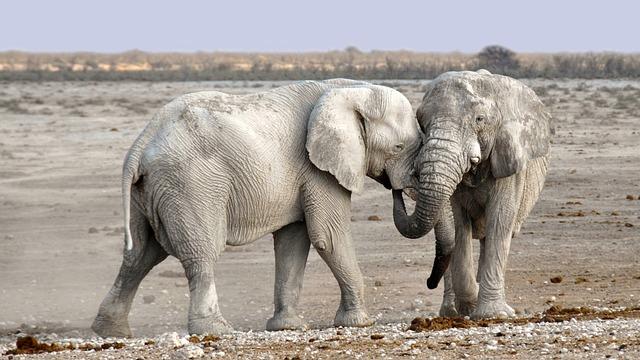National parks, with their breathtaking landscapes and diverse ecosystems, serve as sanctuaries for both wildlife and visitors seeking solace in nature’s splendor. As more people venture into these natural havens, the question of allowing pets in these protected areas has sparked considerable debate. On one hand, pets are cherished companions that enrich our outdoor experiences; on the other, they can pose challenges to the delicate balance of these environments. In this article, we will explore the multifaceted issue of pet restrictions in national parks, weighing the benefits and drawbacks of such policies. By understanding the implications of these restrictions, we aim to foster a deeper appreciation for the intricate relationship between human recreation and wildlife conservation. Join us as we delve into the heart of this topic, offering insights that can help guide responsible and enjoyable park visits for all.
Understanding the Rationale Behind Pet Policies
Pet policies in national parks are often a topic of lively debate, driven by the need to balance environmental preservation with the enjoyment and companionship pets bring to their owners. These policies are crafted with several key considerations in mind. Primarily, they aim to protect the delicate ecosystems that national parks are designed to preserve. Pets, despite their domestication, can introduce non-native species through seeds in their fur or even disrupt local wildlife by triggering natural instincts in predators or prey. Additionally, there is a concern about the potential for pets to disturb other park visitors, impacting their experience of the natural tranquility these spaces are intended to offer.
On the flip side, pet policies can sometimes feel restrictive to pet owners who view their animals as part of the family. Considerations include:
– The emotional bond between pets and their owners.
– The health benefits of shared outdoor activities.
– The potential economic impact on park tourism from pet-owning visitors.
Balancing these diverse interests requires thoughtful policy-making that respects both the integrity of natural habitats and the inclusivity of park experiences. By understanding these rationales, visitors can appreciate the efforts made to sustain both the environment and their own enjoyment.

Balancing Wildlife Preservation with Visitor Experience
- Impact on Wildlife: National parks are sanctuaries for diverse wildlife, and the presence of pets can disrupt their natural behaviors. Pets might chase or harass animals, leading to stress and potential injury. Moreover, the scent and waste of pets can interfere with the ecosystem’s balance, impacting species that rely on specific environmental cues.
- Visitor Safety: While enjoying the great outdoors, visitors might encounter wild animals. Pets can provoke defensive actions from wildlife, putting both the pet and their owner at risk. Keeping pets away ensures that all visitors can safely enjoy their experience without unexpected wildlife encounters.
Balancing the needs of pet owners and the integrity of national parks is crucial. Visitor experience is enriched by the tranquility and pristine nature of these environments. However, when pets are restricted, some visitors may feel their experience is diminished. Pet restrictions aim to create a harmonious environment where wildlife can thrive and visitors can connect with nature without disturbances.

Insights from Park Rangers and Pet Owners
Engaging with both park rangers and pet owners reveals a diverse spectrum of perspectives on the topic. Park rangers often emphasize the importance of preserving natural habitats and protecting wildlife. They point out that certain pets, especially dogs, can inadvertently disturb local fauna, leading to disruptions in delicate ecosystems. Common concerns include:
- Wildlife safety: Pets may chase or scare wildlife, causing stress or harm.
- Habitat preservation: Unleashed pets can trample vegetation or dig, leading to erosion.
- Visitor experience: Not all park-goers are comfortable around animals, which can affect their enjoyment.
On the other hand, pet owners argue for more inclusive policies, highlighting the joy and companionship pets bring during outdoor adventures. They advocate for responsible pet ownership with suggestions such as:
- Leash laws: Ensuring pets are kept on leashes to prevent unwanted interactions.
- Designated pet areas: Creating specific trails or zones where pets can roam more freely.
- Educational programs: Promoting awareness about how to enjoy parks responsibly with pets.
By balancing these insights, there’s potential to create policies that honor both the preservation of nature and the bonds between humans and their furry companions.

Recommendations for a Harmonious Coexistence
To foster a peaceful balance between nature lovers and wildlife, it’s essential to adopt practices that respect both the environment and our four-legged friends. Here are some strategies to consider:
- Designated Pet Zones: Establishing specific areas where pets are welcome allows for better management of wildlife and visitor interactions. These zones can be equipped with amenities like waste disposal bags and pet-friendly trails.
- Education and Awareness: Informing pet owners about the local ecosystem and potential impacts of their pets can enhance responsible behavior. Educational signage and brochures can highlight the importance of keeping pets on leashes and maintaining a safe distance from wildlife.
- Seasonal Restrictions: Implementing temporary pet restrictions during sensitive periods, such as breeding seasons for local fauna, can significantly reduce stress on wildlife populations while still allowing pets during other times.
By embracing these practices, we can ensure that our national parks remain sanctuaries for both native wildlife and the visitors who cherish these natural spaces.

